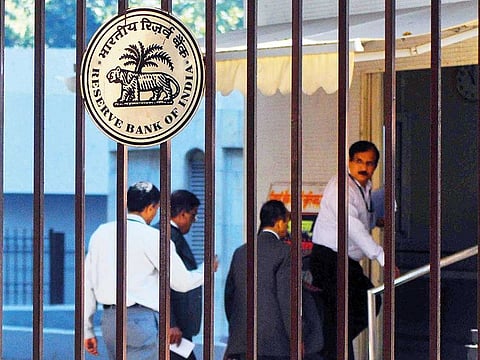India’s central bank spells out concern about potential losses from shadow banks
Credit crunch at non-bank financial companies could lead to defaults

Mumbai
India’s financial regulator has spelt out its concerns about the implications of the country’s spreading shadow banking crisis, saying any failure among the largest of the non-bank finance firms could cause losses comparable to a collapse among the major banks.
In its latest Financial Stability Report released late Thursday, the Reserve Bank of India said the potential losses in the event of the failure of a large housing finance company or non-bank financial company underscore “the need for greater surveillance over large HFCs/NBFCs.”
A year after a series of defaults by Infrastructure Leasing & Financial Services Ltd forced the government to intervene and exposed weaknesses in the sector, the problems of India’s shadow banks are entering a new phase. Other weaker lenders such as Dewan Housing Finance Corp and Anil Ambani’s Reliance Capital Ltd are struggling, putting the loans they received from a handful of the regulated banks at risk.
That poses a new challenge for the RBI, just as Indian banks start to emerge from under a pile of bad loans to large energy, steel, and other industrial companies.
Read more on risks from India’s shadow banking crisis
RBI Governor Shaktikanta Das, who took the post six months ago, said in the report that banks need to focus on governance reforms, while shadow lenders should work on “sustainable” balance sheet growth.
Dewan Housing and Reliance Capital were among the worst performers on S&P BSE 500 Index as of 3:20pm in Mumbai trading. Dewan slumped more than 12 per cent while Reliance Capital fell about 7 per cent. Among banks on the 10-member Bankex index, Yes Bank and IndusInd Bank, which have high exposure to non-bank lenders, clocked the biggest drop with loses of more than 3 per cent.
The RBI’s latest concerns centre on the risk that a credit crunch at non-bank financial companies could lead to defaults and higher borrowing costs, with spin off effects on the traditional lenders. The NBFCs and HFCs have funded themselves by borrowing from banks, mutual funds, insurers, and pension funds, exposing other financial firms in the event of a default.
Indian banks have extended about 7 per cent of their loans to NBFCs. Additional risks stem from their investments in the companies’ bonds.
The failure of the HFC with the maximum capacity to cause solvency losses will lead to a loss of 5.8 per cent of the tier-1 capital across the banking system, and the failure of one bank, according to the RBI stress tests. The failure of the equivalent NBFC would result in the loss of 2.7 per cent of total tier-1 capital and also lead to a bank failure, the RBI added.
“The NBFC sector has become significantly larger than a few years back and some of them are as large as small private sector banks,” said Mitul Budhbhatti, an analyst at CARE Ratings. “That is why RBI has cautioned on systemic risks from the NBFC sector and called for greater surveillance,” he added.
In May, the RBI said it plans to tighten liquidity requirements for the non-bank firms, issuing guidelines that would force most of them to set aside a buffer by investing in high-quality assets.
The RBI’s stress tests also showed that the banks’ bad-loan ratio could fall further to 9 per cent in March 2020, after dropping the most in 15 years to 9.3 per cent as of March 31.
“With the bulk of the legacy non-performing assets already recognised in the banking books, the non-performing asset cycle seems to have turned around,” the RBI said.
Sign up for the Daily Briefing
Get the latest news and updates straight to your inbox



